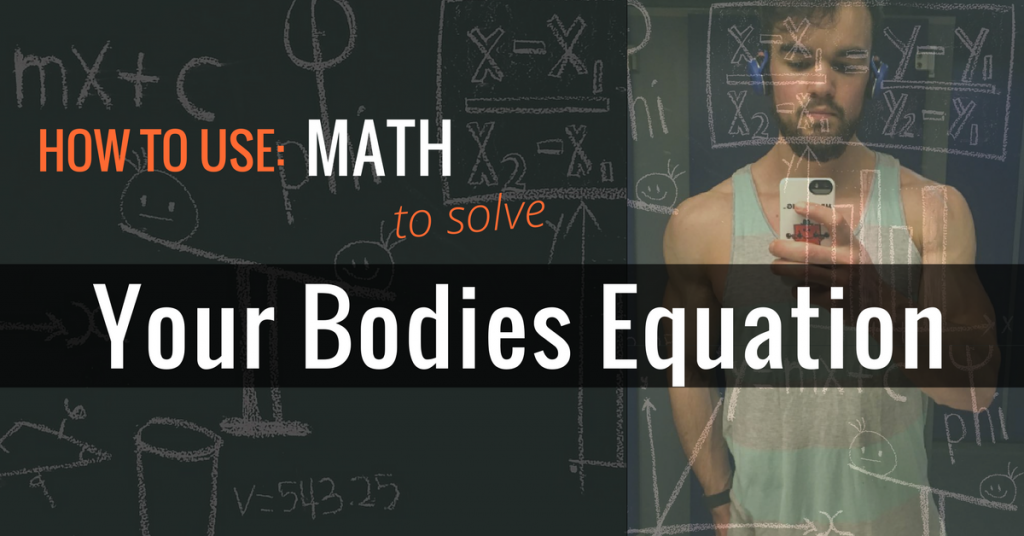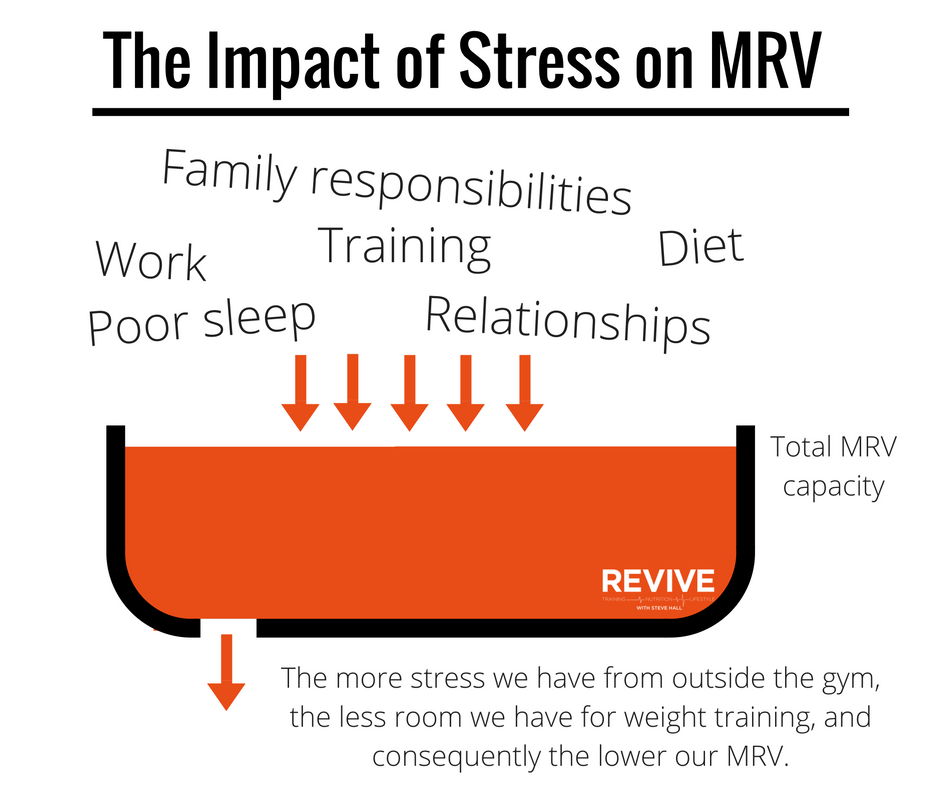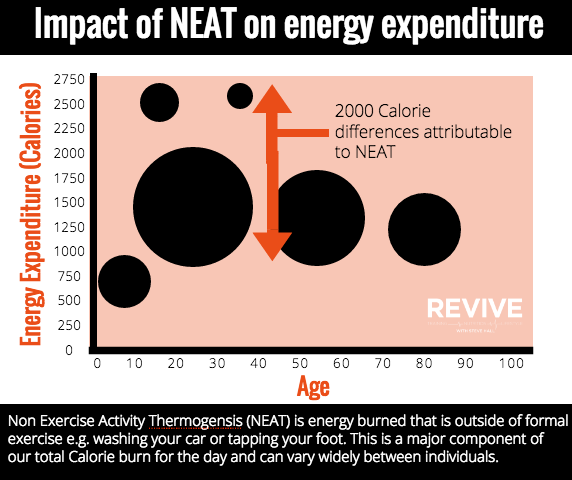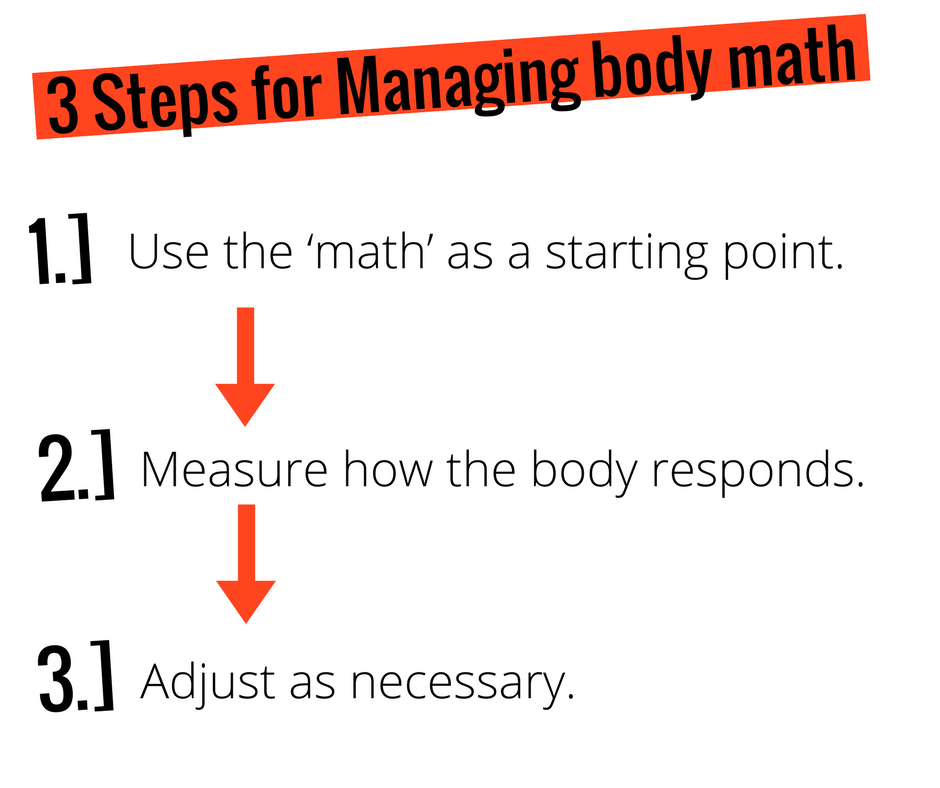
Revive Stronger
How to use math to workout your bodies equation

You can do math.
Your body, sadly, cannot.
What your body can do is eat food, lift weights, move you around, think and process information — you know — all things a fit healthy body should be expected to do. The thing is all off these processes vary on a day to day basis, a weekly basis, a monthly basis and so on. Furthermore, they are different one person to the next, and this makes our bodies incredibly complex.
Your body, my body, every bodies body (lol) is not a simple math equation.
Worse, often the math just leads to more confusion.
In todays article I am going to take you through a variety of examples, which clearly show how calculations don’t always add up, but also how you can use this information to get the answer you were looking for.
Today, I am going to be your not so usual math teacher.
Table of Contents
Volume Requirements (MRV)
Mike Israetel came up with this fantastic theory, one that describes the most training volume you can do and recover from. Little did he realise how he was simultaneously blowing about a million peoples minds.
People all over the world are now ferociously trying to find out their Maximal Recoverable Volume — this is good. You want to be training around your MRV most of the time to get the best results. However, it has also lead to a lot of people getting utterly lost within the numbers.
Do I do 10 or 20 sets?
How do I know when I have reached my MRV?
Once I’ve found my MRV does it stay the same?
^ I get these sort of questions sent to me every week, so I can only imagine how often Mike receives them.
Mike even put out some general guidelines on how many sets per muscle group it would take to hit your own MRV which for most is 15 to 25 per muscle group (remember this is what you would work up to).
People therefore had a starting point.
But were still confused.
This is because our body doesn’t do math, you cannot just use the above and give your body exactly what it needs. The amount of volume your body can do and recover from is a dynamic figure, which means your math gets thrown.
Some things that impact MRV:
^ See how many inputs there are? — tonnes.
Your volume requirements will differ over the course of the year, it will depend on a variety of factors.
Our bodies don’t nicely fit with the math.
Calorie Requirements
The following question must be one of the most common within health & fitness:
“What’s the best Calorie calculator?”
The person asking obviously doesn’t understand that any math, will again, let you down.
2 + 2 = 4
^ that we can be sure of.
But, even if the calculation takes into account your bodyweight, your body fat percentage, gender, and height, the answer we get is NEVER a certain. This is because our Calorie needs come down to more than those listed:
- Daily physical activity: within the scientific literature this is called your Non Exercise Activity Thermogenesis (NEAT) and Non Exercise Physical Activity (NEPA) – this is the movement you do outside of the gym, and will vary wildly between individuals (it’s been seen to vary by over 2000 Calories- read here).
- Formal exercise: are you a long distance runner or do you lift weights 4 times a week? The more you do, the more calories you need.
^ these we can estimate…but it’s only an estimate, and we CANNOT even guess:
- Genetics: one person may burn more calories solely because of the genetics they were born with.
This means two people of the same weight may need vastly different Calories, and even if their weight, height, gender and body fat percentage were matched, they again will very likely require different Calorie amounts. Ravussin et al found this in their metabolic ward studies in which 177 people were confined to a human respiratory chamber (a very small room, think bedroom size) and found up to a 685 variability in calorie expenditure that was put down to being differences in NEAT [1].
[bctt tweet=”Our NEAT has been shown to vary by 2000 Calories a day” username=”revivestronger”]
This is also a big reason why activity trackers can’t accurately give you a precise representation of your Calorie burn.
Now that’s just talking about Calories required to maintain weight, things get even more confusing when we try and apply simple math to fat loss or muscle gain. We all respond differently to the amount of Calories we’re given. Some when given a huge number of Calories will jack up their activity, whilst others will absorb it, and just in the same way some when Calories are restricted lose fat as predicted, others do not. In one study 12 pairs of twins were overfed by 1000kcal a day [2], and they saw a large variation in energy expenditure that was not attributable to BMR.
Training Progression
If you’ve read up on training before you will have become aware of some rate of predicted progressions according to your training age:
That means we should be able to predict how we advance in the gym.
But, much like the examples above, it doesn’t work out all the time. Those progression rates are highly generalised, and like anything general, it does not apply to all. Some people will fall at either end of the bell curve, in that you may progress faster or slower than expected.
We all have a different genetic cap.
If you’re a freak and your genetic cap is up on Mount Everest then you’ll more than likely progress much faster than predicted, if you’ve been given the genetic short straw, you’ll be left with slower than predicted progress.
There is also more to it than genetics.
Our environment will have a big impact on how we perform, this is because all stress impacts our body in a similar way. The more stress we have in our life, the less we can put into the gym, and thus our progression will slow down. You in exam period vs. you during the holidays will see very different rates of advancement.
- Sleep
- Illness
- Work life
- Social life
All the above and more add to your pool of stressors, and that will impact your progress.
Furthermore, this is assuming your programming and nutrition are on point, someone who is more advanced should progress at a slower rate than a intermediate, but only if that intermediate actually has some sort of clue of the principles behind their training and nutrition.
Weight Loss
Ever heard how a 3500 Calorie deficit will lead to 1 pound of fat lost?
Did you know that doesn’t always pan out?
This again is due to the fact maths lets us down…well kinda, it’s not that math lets us down so much as it changes. This means when we set out on our quest to lose 1 pound of fat, we may not actually lose that.
Further confusion comes in the form of water weight, in that the scale changes we see aren’t all fat, they’re made up of a variety of things, from water, to muscle, fat and more. Which means when we see our weight down, we actually cannot be sure what it’s come from.
When we change an input, the outputs change:
==> TEF (thermic effect of food), whether you walk more efficiently or get lazier etc.
^ these are changes a Calorie calculator cannot adjust for.
This makes weight loss math hard.
To add further confusion the drops in each of these differ between individuals, that means your mate who drops his Calories by 500 Calories may lose more weight than you, even if you dropped your Calorie intake by 500 too.
How to solve the math
Hopefully now I have provided you with sufficient evidence that our body cannot be put down to simple math equations. Due to individual difference and the dynamic nature of our environment things don’t always follow as predicted.
However, all is not lost.
For there is a way to navigate this math, and now you have to realise that it’s going to take some regular management. As I know you, the person seeking these hard and fast rules, now want one to deal with this problem, but there isn’t one.
[bctt tweet=”The body doesn’t follow the rules” username=”revivestronger”]
Your body is a free spirit.
It does what it wants.
That means you have to use my hippy as f*ck methods to deal with your bodies recklessness…haha well not hippy, but they’re not hard math. What is required is careful analysis, which you, someone who likes numbers, should enjoy and find easy.
Example, with training volume:
1.] See that you should use around 15 working sets for your chest, for max growth.
2.] Monitor your performance in the gym.
3.] You’re not sore and you’re doing better each workout, looks like you can do more than 15 sets.
Example, with weight loss:
1.] Work out the Calories you need to maintain & take away 500, aiming for 1lb loss per week.
2.] Weigh yourself daily, take a weekly average and compare to the week prior.
3.] You’re down 0.5lbs, you can then decide whether you need to change an input e.g. Calorie intake or an output e.g. exercise.
So remember
Our bodies don’t do math.
As soon as you try and simplify things, you end up getting confused.
Use the math as a starting point.
Look at how your body responds.
Adjust and tweak as necessary.
Math problem…solved.
What Next?
Learn about:
Join my free facebook group or add me on snapchat (revivestronger) and ask your question there, I will respond asap. Or if you’re after a fresh training programme I have a free 4 week plan using DUP that you can download for free here.
One more thing…
Do you have a friend who would love the above? Share this article with them and let me know what they think.
[bctt tweet=”How to use math to workout your bodies equation” username=”revivestronger”]
References
- E Ravussin, S Lillioja, T E Anderson, L Christin, and C BogardusDeterminants of 24-hour energy expenditure in man. Methods and results using a respiratory chamber. J Clin Invest. 1986 Dec; 78(6): 1568–1578.
- Levine JA, Eberhardt NL, Jensen MD. Role of nonexercise activity thermogenesis in resistance to fat gain in humans. Science. 1999; 283(5399): 212–4.
We are a personal coaching service that helps you achieve your goals. We want you to become the best version of yourself.










